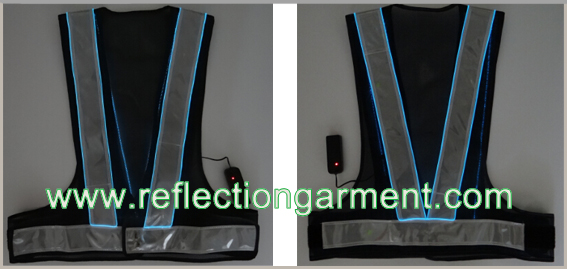Tel:0086-519-85526653
Among the most vital tools in a construction worker’s arsenal is his high-visibility safety vest. They are his best friend when conditions are against him, whether it’s because he’s along a highway, working at night, or in the rain (in which case safety rain gear is an excellent tool). These tools provide workers with the one thing that is invaluable on a construction site: visibility. These high-visibility vests must meet specific criteria put forth by the FHWA. Specifically, they must be ANSI Class 2 or 3 vests. Everyone working near the highway or construction equipment must wear one, not just the workers themselves, but also surveyors, foremen, engineers, and anyone else present on site.
Damage Over Time
As you might imagine, these vests undergo a lot of physical stress due to the nature of construction itself. While this damage can happen all at one time, it usually is an accumulation after many months of wearing these vests. Gradual wear and tear can render a vest unable to be used, as they must be visible at 1000 feet by law. If they aren’t, whether it’s from being torn, defaced, soiled, or damaged, it is required that they get replaced.
Color And Reflectivity
What signs should one look for to check if a vest is too damaged to wear? Vests that are acceptable display high levels of contrast and reflectivity. The colors are still very visible from very far away. While it’s totally expected that there should be some fading and dirtiness, they still need to be able to be seen from 1000 feet away. At the point where the reflectivity isn’t satisfactory anymore and the colors aren’t as distinct, they should be replaced. This rule is applicable to other safety gear as well, including safety rain gear, reflective cones, and more. If they aren’t working, they should be replaced.
Replacement
If you need to replace an old safety vest, the process isn’t difficult. The first step is notifying a supervisor that something needs to be replaced. A little bit of information is required to replace a vest, including what job the vest was for (since they can very by job), local regulations and laws regarding safety vests, and what class the vest is, i.e. Class 2 or Class 3. With this information, the correct vest can be replaced.
There is still one more step after the old vest has been replaced. It’s important to cut the old vest up so that no one else uses it by accident.
Average Lifetime
There are plenty of things that weigh in to how long a safety vest lasts before it needs to be replaced. The average time hovers around six months, so keep that in mind. However, keep in mind that vests worn at higher altitudes or in hotter areas often get worn faster. Also, the type of job being done can take a heavier toll on a safety vest than others, and how the vests are stored and how often they’re cleaned can cause issues as well.




